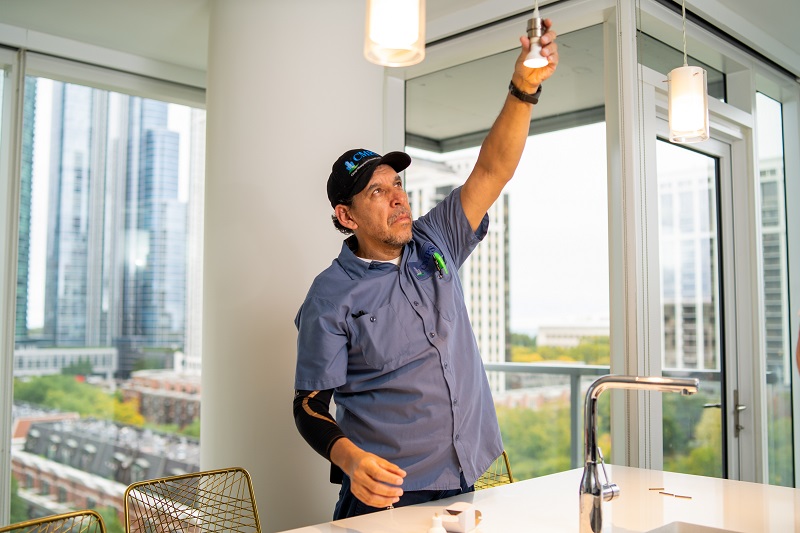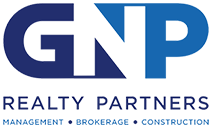One of the best ways to keep a tenant happy and ready to renew their lease is to manage tenant maintenance requests quickly and efficiently. Maintenance requests typically come without warning, causing landlords to juggle schedules and resources. Some requests are more urgent than others, but the tenant’s only concern is their issue, and most want it done “yesterday.”
Many owners hire a professional property management company to handle tenant maintenance requests, outsourcing maintenance responsibilities and the associated headaches and stress. For owner-landlords, having a system that works for both you as the landlord and your tenants is critical for success.
Want to learn more about Property Maintenance?
Request Information | or Call Us at 312-329-8400
Tips for managing rental property maintenance
Below are some best practices to help do-it-yourself landlords manage rental property maintenance requests.
Have a plan.
Under the best circumstances, maintenance and repairs are among the least attractive aspects of property rental for landlords. Being unprepared or disorganized will only make the job more difficult. Your plan should include the following:

- A maintenance reporting and tracking system. An online platform or app enables tenants to report a problem 24/7. It will trigger a notification to all necessary parties, document the details and keep the request “open” until the issue is marked as resolved. Many systems allow tenants to upload photos and make notes about a preferred time to access a unit for repairs. A standardized report will ensure you have all the necessary details to respond to the request. It also keeps all the information in one location (especially if you use it as a project management tool by noting costs, frequency of repairs, etc.). This will be helpful when planning routine maintenance for the coming year, tracking inventory associated with maintenance, e.g., HVAC air filters, and budgeting for rental property maintenance.
- A list of vetted and trusted vendors and contractors. Even if you’re an accomplished do-it-yourselfer, some maintenance issues and repairs may require a highly skilled or licensed professional. Maintaining a current list of go-to vendors will eliminate the stress of searching at the last minute for someone who can help. It also allows you to set expectations for tenant customer service with your vendors.
- A process for emergency repairs. For true emergencies, e.g., a burst water pipe or a broken heater, be sure tenants know the process for reaching someone immediately. You may be their first point of contact, but provide a backup contact and an approved list of contractors for select emergency maintenance if they cannot reach you.
- A budget. Being a landlord requires planning ahead for both routine and unexpected rental property expenses, beginning with maintenance. Landlords often miss several property maintenance variables when estimating rental income and profits or fail to put aside enough cash for inevitable unplanned big-ticket items. Read our related blog on Property Maintenance: How Much Should I Budget?
Know your responsibilities.
It’s important to know what you’re responsible for as the landlord. Make sure your tenant knows what to expect regarding routine maintenance and what they are responsible for, e.g., repairs resulting from damage incurred by the tenant. Detail these responsibilities in a maintenance clause in your lease agreement. Local and state landlord laws may specify responsibilities and timeframes for urgent and non-urgent repairs.
Provide timely and attentive responses.
Respond to all requests as soon as possible. A quick text or phone call to let your tenant know you’re aware of the problem will eliminate a lot of anxiety for your tenant. For non-urgent matters, let your tenant know when you expect to address the issue. (Three to seven days for a critical repair is fairly standard.) A timely response goes a long way toward minimizing frustration if resolving the matter takes more than a week. In this age of supply chain issues, the wait may be longer. Ensure your tenant is aware of the situation and updated on the repair status. If a repair requires multiple steps and visits, provide updates as they occur.
Obtain written consent to enter the property.
Your lease agreement should detail the notification and access procedures for you or a contracted vendor to enter the property in an emergency and for routine maintenance. It’s in everyone’s best interest to accommodate the tenant’s schedule, but this may not always be possible. Carefully adhere to all notification procedures and be mindful of potential escaping pets when entering and leaving a property. Document any notification or access approvals and consent for anything outside what is outlined in the lease. In instances where you become aware of an emergency in the tenant’s absence, typically, you have the right to enter without giving notice. In these cases, do your best to reach the tenant, knock loudly and announce your presence before entering.
Limit the repair to what was requested.
Be sure your vendors know the scope of scheduled work. If the tenant is present when a maintenance worker arrives, they may ask for additional service for repairs not yet requested or documented, increasing your cost. When possible, all service requests should come directly from you—not the tenant.
Document repairs and follow up with the tenant, if necessary.
Make sure you record all the work that was completed. Take a photo if the repair is visible, e.g., replacing a torn screen. Update your tracking system to note the date/time of the work and add any follow-up notes for your maintenance schedule. Be sure to notify your tenant that their maintenance request has been completed. A good maintenance tracking system will do this automatically upon a change in status to “resolved.” You also may have the option of inviting feedback on the service or vendor.
Why Proper Maintenance is Important
Rental property maintenance can be a headache but is a critical job for any landlord. A well-organized system for managing rental property maintenance requests does much more than minimize the headache. It will also help you maintain a positive tenant-landlord relationship—helping to reduce tenant turnover and increasing profits. It costs money to prepare and market a property for a new tenant, plus the short-term loss of rental income. Timely maintenance and repairs will also help keep your property in good shape, increasing its value and justifying any rent increases.
Partner with GNP Realty for Property Management & Maintenance
Independent landlords who wish to avoid the headache of managing maintenance requests from tenants can partner with our team of professional property managers. GNP Realty manages residential properties of all sizes—drawing on our in-house maintenance arm for most maintenance and repair needs. Contact us for more information on how we can assist you with property management needs.
GNP Realty’s in-house family of diversified companies provides our clients with full-service strategy and hands-on support for all your real estate needs. From brokerage and management to construction and maintenance, we tailor our commercial and residential services to help you achieve your goals as a property owner or investor.








